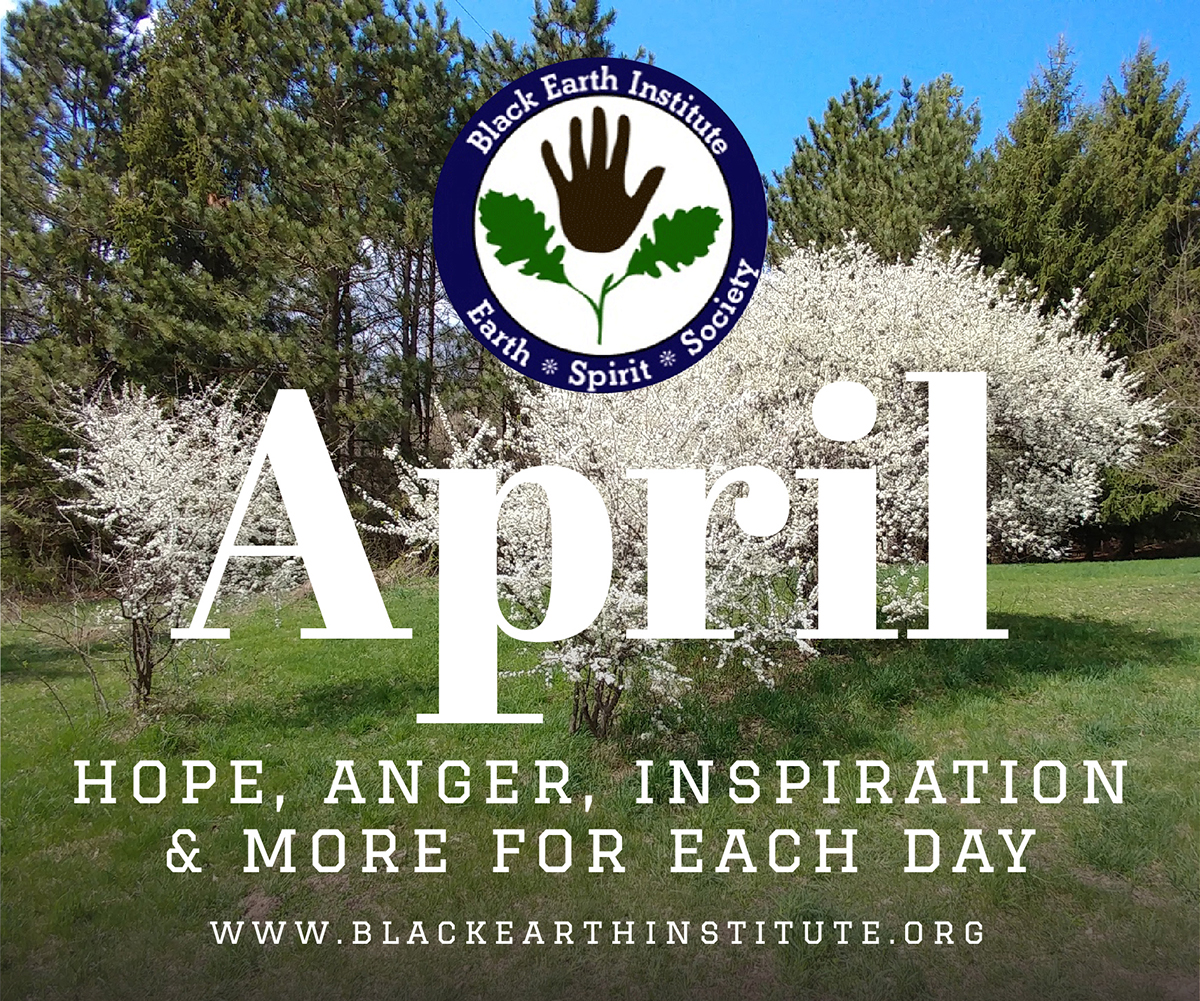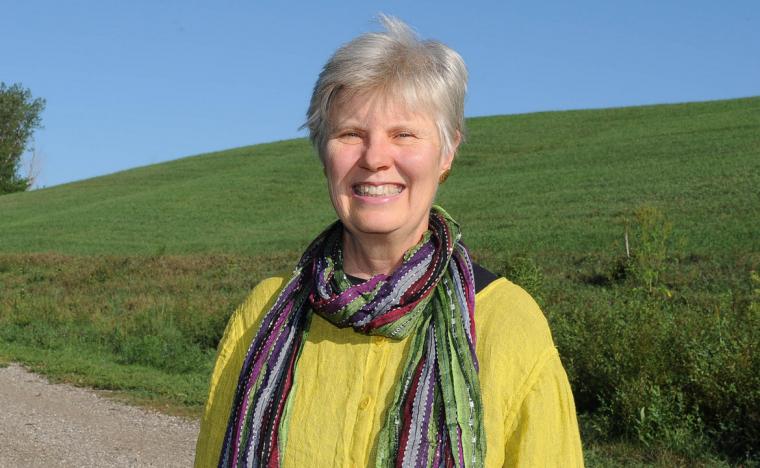
By Mary Swander
Amish children walked down my road, swinging their metal lunch boxes, on their way to their one room schoolhouse. Buggies passed each other, whole families squeezed in together smiling and waving, pulling into their community store in great numbers. I live in the middle of the largest Amish settlement west of the Mississippi River, and I wondered if my neighbors knew. We had had three cases of the corona virus in our county— the first in the state— all from folks who had been taken on a cruise to Egypt by the local bank in their Friends Club. The cruisers had returned asymptomatic, wandering around the area for three days before the virus knocked them low. The State Health Department was bracing for community spread.
We’d been told to constantly wash our hands, to avoid places with high human contact. I had stopped going to the gym and my exercise class. I’d sprayed down all the surfaces in my downtown office with hydrogen peroxide, then finally locked the door to outsiders. Yet Main Street traffic was as busy as ever and the marquee on the bank across the street still flashed: Over 50? Join our Friends Club and Travel with Us.
The Amish businesses were still open and didn’t seem to be taking any precautions. Running errands with a new-found targeted speed, I tried to inform my neighbors.
“There’s a deadly virus in our midst,” I told the owners of the hardware store.
They looked at me as if I had lost my mind.
They don’t know, I realized. Or don’t get it. How could they know? The whole point of Amish existence was cloistered isolation from the outside world. Without T.V., radio, newspapers or internet, who would know that COVID-19 was spreading throughout the world and had already killed thousands of people in China, Italy and Spain.
“It’s going to be similar to the polio epidemic that we knew as kids,” I said.
That epidemic had been bad, the Amish acknowledged, having had several children in the settlement crippled by that virus.
“Maybe even worse. More like the Spanish Flu of 1918.”
That comparison was beyond the scope of their personal memories and it didn’t seem to register.
I went into the community store. Maybe I came on too strong at the hardware store, I thought. Scared them. So I bought a bag of nuts and made small talk to the owner, and without elaboration, in the flattest, least emotional voice I could muster, I slipped in the news that there was a serious virus going around the area.
“Oh?” the store owner looked at me, one eyebrow raised.
I moved on to the Amish greenhouse.
“You need to stay home,” I told Abram and Bertha. Years before, Bertha had had two different bouts of cancer. Last fall, she’d had a serious case of pneumonia. “It’s best not to go into Iowa City this week.” The Amish love to hang out at the big box stores where hundreds of people shop and mill around together, fingering and picking up items, reading the prices, then replacing them on the shelves.
“We’re going there tomorrow, Bertha said.
“Who’s taking you?” The Amish have their own drivers who transport them to the doctor, on errands, and to the grocery store.
“Oh, our driver’s a really nice guy. He just got back from a cruise.”
“Oh, no! Get a new driver,” I said, but my protestations were only met with laughter.
I tried to explain that soon the governor would be issuing a decree that everyone needed to stay home and isolate, essentially quarantine themselves to prevent the spread of the virus.
“Everyone has to stay at home?” Bertha asked. “The English have to stay
home?” (Anyone who isn’t Amish is called “English.”)
I nodded.
“What are the English going to do with themselves?” Bertha asked. “They don’t
have a jigsaw puzzle in the house.”
I shook my head.
I know what they’re going to do. This.” Bertha said and pantomimed scrolling through a cell phone with her index finger.
“You got that right,” I laughed.
Without devices, Jigsaw puzzles are the Amish recreational tool of choice. They love the intricacy of the challenge, the uniqueness of of each puzzle. They know how to concentrate and sit still long enough to accomplish the tasks. They like the feeling of pleasure and accomplishment they get at the end of the day—without having to leave the house or spend a huge amount of money. On New Year’s Day I’ve found whole extended Amish families gathered together at large tables, bent over a puzzle, fitting the pieces together. Just a few hours later, the 500-piece puzzle is completed. Soon it is mounted on a board, framed, and hung on the wall.
Early the next week, both the governor and the presidential task force issued a mitigation order: 15 Days to Slow the Spread. The bank marquee now read: Need COVID-19 Info? See Our Website. But the Amish children kept walking down the road to school and the buggies kept rolling toward their church services. Face-to-face meetings were now a thing of the past, so I printed off the CDC’s recommendations for social distancing, drove down the road. Like Paul Revere, I stopped at every farm mailbox and dropped off a flyer.
I called a nearby English friend who had been a state hygienist. She hopped on the phone and got ahold of the county health department who, in turn, contacted the Amish bishops, or pastors.
“Are they going to make us close our schools?” one of my neighbors called me from an Amish phone shack in the middle of the cornfield.
“It’s time to home school,” I said.
Now the children are home learning their sums on their farms. The buggies are washed and in their sheds. The men are out in the field struggling to prepare the ground to plant their spring crops, but the neighborhood is quieter than I’ve ever known. These days the rare car or horse powers down the road. A covey of quail, once hidden in the windbreak, scurry across the pasture. Pheasants strut through the front yard. Other birds have begun to return from their migrations, the flock of Canada geese some of the few creatures left on the earth who can gather at will and transverse international borders. The dawn chorus of birds no longer competes with early morning traffic. Instead, the male robins take the lead, their clear songs beginning around 4:00 a.m., the first light filtering through the trees. Their whistles warn competitors not to venture into their territory. Cheerily, cheer up, cheer up, cheerily, cheer up.
Inside our houses, we English try to figure out a way to cheer up and cope with our isolation. Some chafe against it and sneak out to the coffee shop or play a game of basketball on the court in town. Others spend hours on Netflix or doing just what Bertha had predicted, their index fingers moving them from one bad news story to the next. Others connect with family and friends on other devices, even Zooming through holidays. But the English have also emptied the store shelves of jigsaw puzzles, snapping them up whenever they can, rediscovering this quiet non-electrical home entertainment that absorbs hours of one’s attention and creates a bonding experience for families.
On my own Facebook feed, English friends have posted political rants and photos of their new-found bread-baking skills. They performed accordion solos and donned wigs to cover up their attempts at self-barbering. Finally, a friend wrote: What we’re doing to retain our sanity. Below the text a picture of a large jigsaw puzzle, the pieces fit together perfectly creating a pastoral scene: a windmill standing against a blue sky, white clouds, cows grazing in the pasture in the distance, a chicken pecking in the yard in front of the white two-story farm house in the foreground. On the clothesline an Amish quilt with a lone star pattern, an intricate arrangement of black, green and red strips of cloth on a white background, flapping in the breeze.
 Mary Swander is the Poet Laureate of Iowa, the Artistic Director of Swander Woman Productions, and the Executive Director of AgArts, a non-profit designed to imagine and promote healthy food systems through the arts.
Mary Swander is the Poet Laureate of Iowa, the Artistic Director of Swander Woman Productions, and the Executive Director of AgArts, a non-profit designed to imagine and promote healthy food systems through the arts.
Her latest books include a collection of essays called The Sunny Side from Route 3 Press., and The Girls on the Roof (Turning Point/Word Tech, 2009), a Mississippi River flood narrative in a collection of poetry. She is also currently touring her plays Vang, a drama about recent immigrant farmers and Map of my Kingdom, or Who’s Going to Get the Farm? Swander’s play Farmscape has been performed throughout the U.S.
www.maryswander.com

